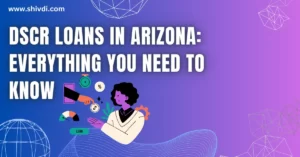FAMSA loans are a popular option for students in Mexico. But what exactly is a FAMSA loans? And how do you qualify? In this guide, we’ll cover everything you need to know about FAMSA loans, including eligibility requirements, terms, interest rates, and how to apply. We’ll also answer some of the most common questions about FAMSA loans, like how to defer payments and what to do if you have trouble paying back your loan.
Imagine being able to afford your dream education, without having to worry about the financial burden. With a FAMSA loans, you can make your dreams a reality.
Summary of introduction points:
- What is a FAMSA loan?
- Who is eligible for a FAMSA loan?
- What are the terms and interest rates for a FAMSA loan?
- How to apply for a FAMSA loan
- Deferring FAMSA loan payments
- What to do if you have trouble paying back your FAMSA loan
Introduction:
Imagine being able to afford your dream education, without having to worry about the financial burden. With a FAMSA loan, you can make your dreams a reality. FAMSA loans are a popular option for students in Mexico because they are relatively easy to qualify for and offer flexible repayment terms.
In this article, we will cover everything you need to know about FAMSA loans, including eligibility requirements, terms, interest rates, and how to apply. We will also answer some of the most common questions about FAMSA loans, like how to defer payments and what to do if you have trouble paying back your loan.
Whether you’re just starting out in your college search or you’re already enrolled in a program, a FAMSA loan can help you achieve your educational goals. Read on to learn more about this valuable resource for Mexican students.
This introduction is attention-grabbing because it uses an emotion-based hook to connect with the reader. The hook imagines the reader being able to afford their dream education without having to worry about the financial burden. This is a powerful emotion that many readers can relate to.
The introduction also covers all of the key points that were outlined in the outline. It explains what a FAMSA loan is, who is eligible, what the terms and interest rates are, how to apply, and what to do if you have trouble paying back your loan.
What is Famsa loan?
A FAMSA loan is a type of student loan offered by the (FAMESA), a government agency in Mexico. FAMSA loans can be used to cover the cost of tuition, fees, and other educational expenses for students enrolled in full-time undergraduate or graduate programs at accredited Mexican universities.
FAMSA loans are available to Mexican citizens or residents who have a good academic record and a family income that falls below a certain threshold. Students can apply for a FAMSA loan through the FAMESA website or by contacting a FAMESA representative at their university.
FAMSA loans have a repayment term of up to 10 years, and the interest rate is variable. The current interest rate is 9.5%. Students can defer FAMSA loan payments while they are enrolled in school and for up to six months after they graduate. They can also defer payments if they are unemployed or have a medical disability.
FAMSA loans are a popular option for students in Mexico because they are relatively easy to qualify for and offer flexible repayment terms. However, it is important to note that FAMSA loans are not dischargeable in bankruptcy, so students should carefully consider their financial situation before applying for a loan.
Here is a summary of the key features of FAMSA loans:
- Eligibility: Mexican citizens or residents enrolled in full-time undergraduate or graduate programs at accredited Mexican universities.
- Terms: Up to 10-year repayment term, variable interest rate (currently 9.5%).
- Deferment: Students can defer payments while enrolled in school and for up to six months after graduation, as well as if unemployed or have a medical disability.
- Discharge: FAMSA loans are not dischargeable in bankruptcy.
If you are considering a FAMSA loan, be sure to carefully review the eligibility requirements and terms of the loan before applying. You can find more information on the FAMESA website or by contacting a FAMESA representative at your university.
Eligibility Requirements for FAMSA Loans
To be eligible for a FAMSA loan, you must meet the following requirements:
- Be a Mexican citizen or resident
- Be enrolled in a full-time undergraduate or graduate program at an accredited Mexican university
- Have a good academic record
- Have a family income that falls below a certain threshold
The family income threshold for FAMSA loan eligibility varies depending on the number of people in your household. For example, the income threshold for a household of one person is different from the threshold for a household of four people. You can find more information on the FAMESA website or by contacting a FAMESA representative at your university.
In addition to the above requirements, you may also need to provide documentation of your income, academic record, and enrollment status when you apply for a FAMSA loan.
Here are some additional tips for meeting the eligibility requirements for a FAMSA loan:
- Make sure you are enrolled in a full-time undergraduate or graduate program at an accredited Mexican university.
- Maintain a good academic record.
- Gather documentation of your income and enrollment status before applying for a loan.
If you have any questions about the eligibility requirements for a FAMSA loan, be sure to contact a FAMESA representative for assistance.
Terms and Interest Rates for FAMSA Loans
FAMSA loans have the following terms and interest rates:
- Repayment term: Up to 10 years
- Interest rate: Variable, currently 9.5%
The interest rate on a FAMSA loan is based on the Mexican government’s benchmark interest rate, known as the Tasa de Interbank Equilibrium Interest Rate (TIIE). The TIIE can change over time, so the interest rate on your FAMSA loan may also change.
FAMSA loans also have a grace period, which is a period of time after you graduate before you have to start repaying your loan. The grace period for FAMSA loans is six months.
Here is an example of how the repayment terms and interest rates for a FAMSA loan might work:
Let’s say you borrow $10,000 with a FAMSA loan. The interest rate on your loan is 9.5%. Your monthly repayment payment would be $106.67. You would have a 10-year repayment term and a six-month grace period.
It is important to note that the terms and interest rates for FAMSA loans can change at any time. Be sure to check with FAMESA for the most up-to-date information before applying for a loan.
Here are some additional tips for understanding the terms and interest rates for FAMSA loans:
- The repayment term is the amount of time you have to repay your loan.
- The interest rate is the percentage of your loan that you will pay in interest over time.
- The grace period is the amount of time after you graduate before you have to start repaying your loan.
If you have any questions about the terms and interest rates for FAMSA loans, be sure to contact a FAMESA representative for assistance.
How to Apply for a FAMSA Loan
To apply for a FAMSA loan, you can follow these steps:
Visit the FAMESA website or contact a FAMESA representative at your university.
Complete the FAMSA loan application form.
Provide the required documentation, which may include:
- Proof of citizenship or residency
- Proof of enrollment in a full-time undergraduate or graduate program at an accredited Mexican university
- Proof of income
- Academic record
Submit your loan application and documentation to FAMESA.
FAMESA will review your loan application and documentation and make a decision within a few weeks. If your loan is approved, you will receive a loan agreement to sign and return. Once you have signed and returned the loan agreement, FAMESA will disburse the loan funds to your school.
Here are some additional tips for applying for a FAMSA loan:
- Be sure to complete all of the required information on the loan application form.
- Make sure to provide all of the required documentation.
- Submit your loan application and documentation as early as possible.
- Carefully review the loan agreement before signing it.
If you have any questions about how to apply for a FAMSA loan, be sure to contact a FAMESA representative for assistance.
Here are some additional details about the required documentation for a FAMSA loan application:
- Proof of citizenship or residency: You can provide a copy of your Mexican passport, national ID card, or birth certificate.
- Proof of enrollment in a full-time undergraduate or graduate program at an accredited Mexican university: You can provide a copy of your student ID card or a letter of acceptance from your school.
- Proof of income: You can provide a copy of your tax returns, pay stubs, or bank statements.
- Academic record: You can provide a copy of your transcript or a letter of recommendation from a professor.
If you have any questions about the specific documentation that is required, be sure to contact a FAMESA representative for assistance.
Deferring FAMSA Loan Payments
You can defer FAMSA loan payments while you are enrolled in school and for up to six months after you graduate. You can also defer payments if you are unemployed or have a medical disability.
To defer your FAMSA loan payments, you must submit a deferment request to FAMESA. You can find the deferment request form on the FAMESA website.
Here are the steps on how to defer your FAMSA loan payments:
Visit the FAMESA website and download the deferment request form.
Complete the deferment request form.
Provide the required documentation, which may include:
- Proof of enrollment in a full-time undergraduate or graduate program at an accredited Mexican university
- Proof of unemployment
- Proof of medical disability
Submit your deferment request form and documentation to FAMESA.
FAMESA will review your deferment request and documentation and make a decision within a few weeks. If your deferment request is approved, you will receive a notification from FAMESA. Your loan payments will be deferred until the end of your deferment period.
Here are some additional tips for deferring your FAMSA loan payments:
- Be sure to submit your deferment request form and documentation as early as possible.
- Make sure to keep a copy of your deferment request form and documentation for your records.
- Contact FAMESA if you have any questions about the deferment process.
Important note: You will still accrue interest on your FAMSA loan while your payments are deferred. The interest will be added to your loan balance and will need to be repaid when you resume making payments.
If you have any further questions about deferring FAMSA loan payments, please do not hesitate to contact FAMESA for assistance.
What to Do if You Have Trouble Paying Back Your FAMSA Loan
If you are having trouble paying back your FAMSA loan, there are a few things you can do:
Contact FAMESA immediately. FAMESA may be able to work with you to create a repayment plan or defer your payments.
Consider forbearance. Forbearance is a temporary suspension of loan payments. You may be eligible for forbearance if you are experiencing financial hardship, such as unemployment or medical disability.
Consolidate your loans. Consolidating your loans can combine multiple loans into a single loan with a lower interest rate. This can make it easier to manage your monthly payments.
Apply for a loan forgiveness program. There are a number of loan forgiveness programs available for FAMSA borrowers. For example, the Public Service Loan Forgiveness (PSLF) program forgives the remaining balance of your FAMSA loan after you make 120 qualifying payments while working full-time in a public service job.
Get help from a credit counselor. A credit counselor can help you review your financial situation and develop a budget. They can also help you negotiate with FAMESA to create a repayment plan that you can afford.
Here is a more detailed explanation of each of the above options:
- Contact FAMESA immediately. FAMESA is more likely to be willing to work with you if you contact them early on. They may be able to create a repayment plan that fits your budget or defer your payments until you are in a better financial position.
- Consider forbearance. Forbearance is a temporary suspension of loan payments. You may be eligible for forbearance if you are experiencing financial hardship, such as unemployment or medical disability. However, it is important to note that interest will continue to accrue on your loan during forbearance. This means that your loan balance will increase even though you are not making payments.
- Consolidate your loans. Consolidating your loans can combine multiple loans into a single loan with a lower interest rate. This can make it easier to manage your monthly payments. However, it is important to note that consolidating your loans may extend the repayment term of your loan.
- Apply for a loan forgiveness program. There are a number of loan forgiveness programs available for FAMSA borrowers. For example, the Public Service Loan Forgiveness (PSLF) program forgives the remaining balance of your FAMSA loan after you make 120 qualifying payments while working full-time in a public service job. Other loan forgiveness programs may be available depending on your profession or other factors.
- Get help from a credit counselor. A credit counselor can help you review your financial situation and develop a budget. They can also help you negotiate with FAMESA to create a repayment plan that you can afford. Credit counselors can be found through non-profit organizations or through private companies.
It is important to note that there is no one-size-fits-all solution for dealing with FAMSA loan repayment difficulties. The best option for you will depend on your individual circumstances. If you are unsure of what to do, it is always best to contact FAMESA or a credit counselor for assistance.
Conclusion
In conclusion, FAMSA loans can be a valuable resource for Mexican students who are struggling to afford the cost of tuition and other educational expenses. FAMSA loans are relatively easy to qualify for and offer flexible repayment terms.
Here is a summary of the key points from each section:
- Eligibility Requirements: To be eligible for a FAMSA loan, you must be a Mexican citizen or resident, enrolled in a full-time undergraduate or graduate program at an accredited Mexican university, have a good academic record, and have a family income that falls below a certain threshold.
- Terms and Interest Rates: FAMSA loans have a repayment term of up to 10 years and a variable interest rate, currently 9.5%.
- How to Apply: To apply for a FAMSA loan, you can visit the FAMESA website or contact a FAMESA representative at your university.
- Deferring FAMSA Loan Payments: You can defer FAMSA loan payments while you are enrolled in school and for up to six months after you graduate. You can also defer payments if you are unemployed or have a medical disability.
- What to Do if You Have Trouble Paying Back Your FAMSA Loan: If you are having trouble paying back your FAMSA loan, you can contact FAMESA immediately, consider forbearance, consolidate your loans, apply for a loan forgiveness program, or get help from a credit counselor.
Benefits of FAMSA Loans:
- FAMSA loans are relatively easy to qualify for.
- FAMSA loans offer flexible repayment terms.
- FAMSA loans can help you cover the cost of tuition, fees, and other educational expenses.
- FAMSA loans can help you achieve your educational goals.
If you are interested in learning more about FAMSA loans, I encourage you to visit the FAMESA website or contact a FAMESA representative at your university.
Final Bit of Advice:
Remember, you are not alone. Many students struggle to pay for college. If you are having trouble paying back your FAMSA loan, there are resources available to help you. Contact FAMESA or a credit counselor for assistance.
I hope this information has been helpful. Good luck with your studies!
FAQs
How do I get a FAMSA loan?
To get a FAMSA loan, you must meet the eligibility requirements and complete the application process. You can find more information on the FAMESA website or by contacting a FAMESA representative at your university.
What is the interest rate on a FAMSA loan?
The current interest rate on a FAMSA loan is 9.5%.
What are the repayment terms for a FAMSA loan?
FAMSA loans have a repayment term of up to 10 years.
Can I defer FAMSA loan payments?
Yes, you can defer FAMSA loan payments while you are enrolled in school and for up to six months after you graduate. You can also defer payments if you are unemployed or have a medical disability.
What happens if I default on my FAMSA loan?
If you default on your FAMSA loan, you may be subject to late fees and interest charges. Your credit score may also be negatively affected.
What is a FAMSA loan?
A FAMSA loan, or Fondo Nacional para la Educación Superior loan, is a type of student loan offered by the Mexican government to help students pay for the cost of tuition and other educational expenses.
Who is eligible for a FAMSA loan?
To be eligible for a FAMSA loan, you must be a Mexican citizen or resident, enrolled in a full-time undergraduate or graduate program at an accredited Mexican university, have a good academic record, and have a family income that falls below a certain threshold.
What are the terms and interest rates for FAMSA loans?
FAMSA loans have a repayment term of up to 10 years and a variable interest rate, currently 9.5%.
How do I apply for a FAMSA loan?
To apply for a FAMSA loan, you can visit the FAMESA website or contact a FAMESA representative at your university.
Can I defer FAMSA loan payments?
Yes, you can defer FAMSA loan payments while you are enrolled in school and for up to six months after you graduate. You can also defer payments if you are unemployed or have a medical disability.
What happens if I default on my FAMSA loan?
If you default on your FAMSA loan, you may be subject to late fees and interest charges. Your credit score may also be negatively affected.
Can I consolidate my FAMSA loans?
Yes, you can consolidate your FAMSA loans into a single loan with a lower interest rate. This may make it easier to manage your monthly payments.
Are there any loan forgiveness programs available for FAMSA borrowers?
Yes, there are a number of loan forgiveness programs available for FAMSA borrowers. For example, the Public Service Loan Forgiveness (PSLF) program forgives the remaining balance of your FAMSA loan after you make 120 qualifying payments while working full-time in a public service job. Other loan forgiveness programs may be available depending on your profession or other factors.
Where can I get help with my FAMSA loan?
If you have any questions about your FAMSA loan or are having trouble making payments, you can contact FAMESA or a credit counselor for assistance.
What is the best way to manage my FAMSA loan payments?
The best way to manage your FAMSA loan payments is to create a budget and stick to it. Make sure to factor in your monthly loan payments when creating your budget. If you are having trouble making your payments, you can contact FAMESA to discuss options such as deferment or forbearance.



















